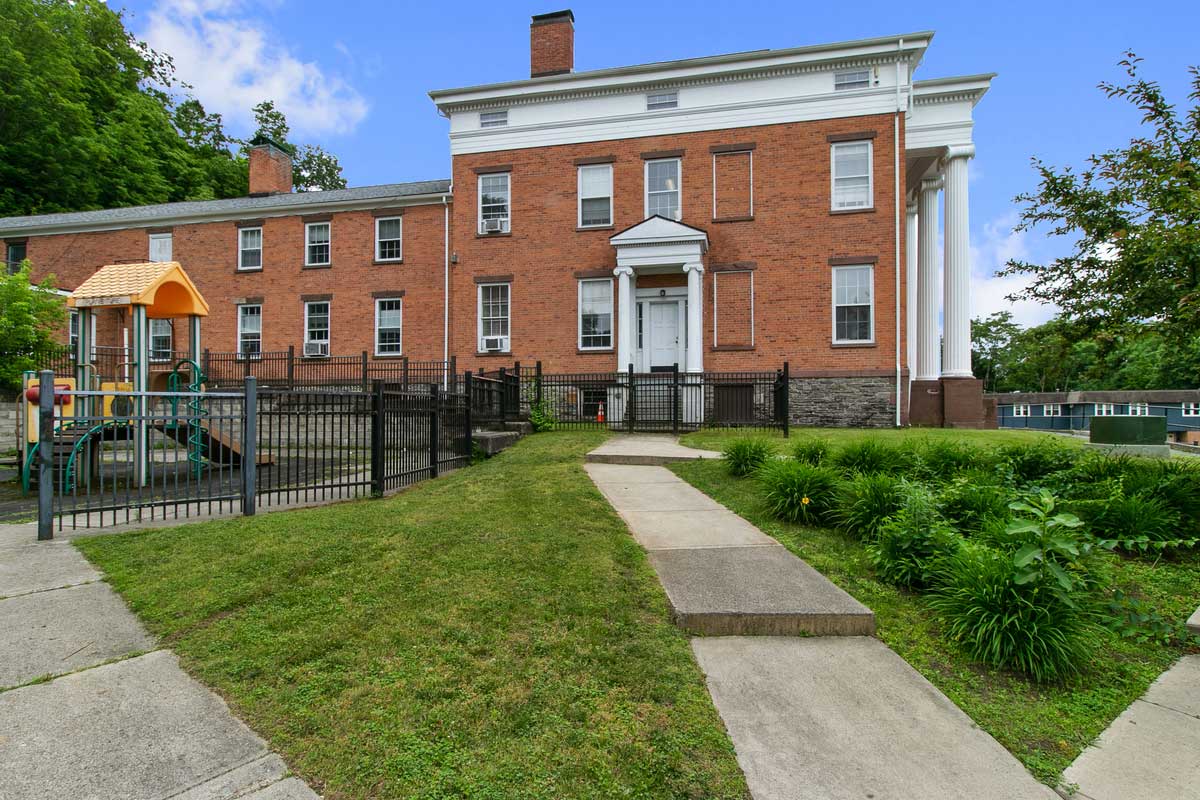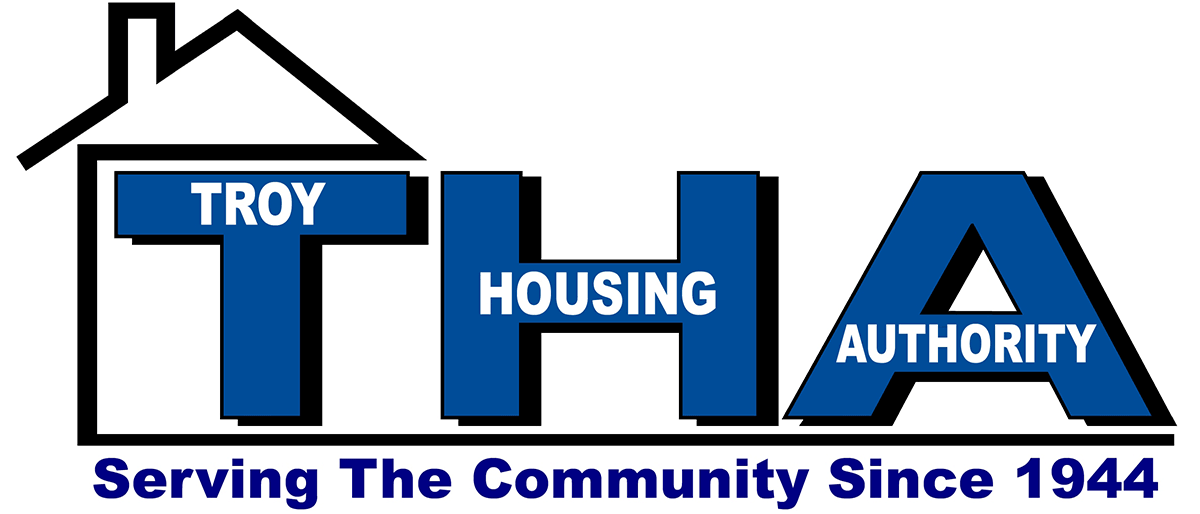SAFE, DECENT AND AFFORDABLE HOUSING
That has been the mandate of the Troy Housing Authority since it was establish by an act of the New York State Legislature on April 12, 1944 as evidenced by this excerpt from the first meeting of the agency:
“Mr. Mark Filley was also present at this initial meeting. Mr. Filley has long been interested in a project of this nature for the City of Troy. He explained in detail a survey that was made in 1937 by a group of students at Russell Sage College on living conditions in several areas of the city. Nine hundred buildings were covered in this survey which included three different areas of the City of Troy. This survey proved that there was a definite need for a housing project as many of the families interviewed revealed that there was no proper sanitation in many houses, some were rat infested, some of the streets were inundated when it rained, and many of the houses still used oil for lighting.”
The government’s role in housing policy began as a result of the Great Depression. In an effort to bring the economy out of bad times and house millions of homeless during the Great Depression, Herbert Hoover, as President, instituted the use of home loan discount banks; in 1932, the Federal Home Loan Bank Act created the Federal Home Loan Banking System. These new banks created a new supply of loans that would be used specifically to buy homes and refinance mortgages.
After Hoover, the Roosevelt Administration ushered in New Deal Policies to further revive the economy. Housing reformers of the New Deal era firmly believed that by providing affordable and adequate housing (thereby improving one’s environment), the ills of the slums created from the Great Depression could be cured.
Early New Deal housing programs came as part of employment packages that called for the removal of slums and made provisions for low-income housing and the Public Works Administration, created a new division to temporarily handle housing issues that was later made permanent as the U.S. Housing Authority in 1937.
It was during this time period that control of housing policy began to shift from federal agencies to local entities. The U.S. Housing Authority provided money to local public housing authorities, which oversaw the development, maintenance and ownership of public housing. The 1937 Housing Actrequired the demolition of slum housing before public housing could be built and this was the basis for New York State’s Public Housing Law which was enacted on June 8, 1939.
When the Troy Housing Authority was created, in 1944, our mandate was to provide safe, decent and affordable housing. Shortly after the Troy Housing Authority was created the need for low cost housing increased as Veterans returned from World War II. Ultimately, over 800 apartments were built and to this day veterans receive a preference when applying for our assistance.
On November 9, 1965, President Lyndon B. Johnson announced his War on Poverty. As part of this initiative the Housing Act of 1968 was passed, creating the U.S. Department of Housing and Urban Development (HUD) to oversee the provision of Federal assistance to localities for housing and other community development programs. This was followed by the Fair Housing Act of 1969 which prohibited racial discrimination in the housing market and gave HUD greater responsibility and more funding. This resulted in the building of more public housing, including approximately 500 apartments built by the Troy Housing Authority.
During the 1970’s, as the nation’s economy was heading into a recession, the administration of President Richard M. Nixon passed the Housing and Community Development Act of 1974. This resulted in more funding for public housing, and the Troy Housing Authority built over 140 public housing apartments.
The Housing and Community Development Act of 1974 also established Section 8 Rental Assistance, enabling low-income households to receive rental assistance while living in private apartments that meet HUD’s Housing Quality Standards. The Troy Housing Authority initiated a Section 8 Program shortly after the program began.
Even President Ronald Reagan played a role in expanding the supply of affordable housing when he and Congress passed the Tax Reform Act of 1986. While the main purpose of this Act was to simplify the income tax code, broaden the tax base and eliminate many tax shelters and other preferences it did create the Low Income Housing Tax Credit Program gives incentives for the utilization of private equity in the development of affordable housing aimed at low-income Americans. Essentially, private investors receive a tax break for helping to fund low-income housing development.
The Urgent Relief for the Homeless Act of 1987, later renamed the McKinney-Vento Homeless Assistance Act after two of it’s primary supporters, to provide a range of services to homeless people, including emergency shelter, transitional housing, job training, primary health care, education, and some permanent housing. The Troy Housing Authority administers an array of Shelter Plus Care Programs for the homeless in affiliation with Joseph’s House, Unity House, Catholic Charities and the YWCA of Troy.
Under the Administration of George H.W. Bush Congress established the National Commission on Severely Distressed Public Housing in 1989 to study the issue of dilapidated public housing. After submitting the report to Congress in 1992, legislation creating the HOPE VI Program was written. The Troy Housing Authority has received HOPE VI funding to demolish and dispose of one severely distressed public housing project and may apply in the near future for funding to revitalize a portion of another housing development.
During Bill Clinton’s term as President, the Quality Housing and Work Responsibility Act of 1998was passed. QHWRA was landmark legislation that made public housing reform a reality by reducing the concentration of poverty in public housing; protecting access to housing assistance for the poorest families; supporting families making the transition from welfare to work; raising performance standards for public housing agencies, and rewarding high performance. The Troy Housing Authority responded by initiating several program to promote the self sufficiency and economic independence of our residents. When I talk about the role of Social Work Interns at the Troy Housing Authority you will hear about many of these programs.
During the Administration of current President George W. Bush, the promotion of homeownership became an emphasis. In the summer of 2004, President Bush announced a goal of increasing minority homeownership to 5.5 million families by the end of the decade and On December 16, 2004 President Bush signed the American Dream Downpayment Act into law. The Troy Housing Authority responded by taking action to allow Section 8 participants to use their housing assistance voucher to pay a portion of their mortgage and by expanding one of our component corporations, the Troy Housing Development Corporation. Presently, the Troy Housing Development Corporation is building new housing for sale to low-income households with the purchase priced based on the family’s annual household income.
In 2011 the Troy Housing Authority shifted from a centralized form of management to a site based form of management known as Asset Management. Under Asset Management there are site offices at each location where tenants can meet with staff, request maintenance assistance and pay rent.
In 2018 the Troy Housing Authority converted from our apartments Public Housing to Project Based Section 8 through the U.S. Department of Housing and Urban Development (HUD) Rental Assistance Demonstration (RAD) Program. This has opened up opportunities to access new potential funding sources so that we may continue to improve our developments and services.

Even with this extensive inventory, through which we provide rental assistance to over 2,000 households, there is still an incredible need for our resources. In fact, 60% of all households in Troy could qualify for rental assistance and we have many people waiting a long time on our waiting lists.
What makes us so popular: Participants in all of the housing programs managed by the Troy Housing Authority pay 30% of their adjusted gross income towards their housing expenses (rent and utility costs) no matter what size apartment their family qualifies to live in. To qualify for our programs all participants must be low-, very low- or extremely low- income in order to move into our apartments.
